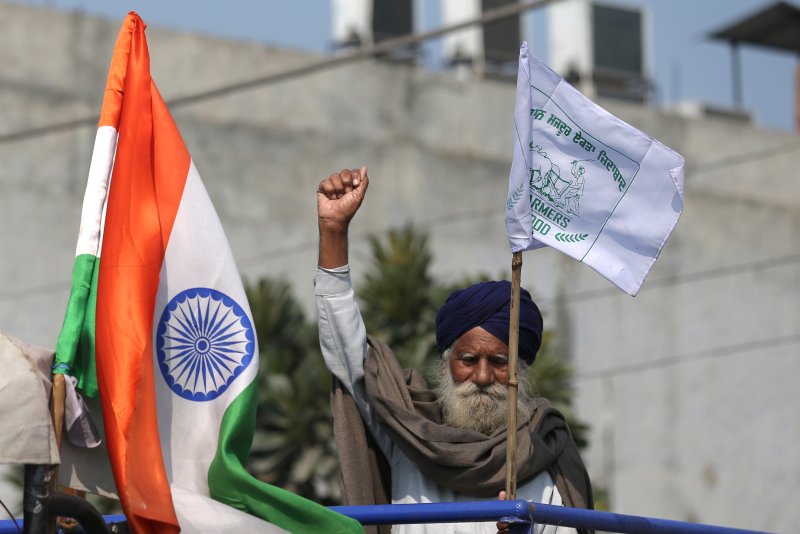
The effects of climate change can be seen in nearly all weather-related fluctuations in the atmosphere and on Earth, researchers say. File Photo by Martin Truffer/UAF/NASA/UPI | License Photo
Dec. 9 (UPI) -- The impact of climate change is apparent in nearly all aspects of weather-related fluctuations in the atmosphere and ecosystem, an analysis published Thursday by the journal Earth Systems Dynamics found.
This climate variability caused by global warming can be seen in events such as temperature and precipitation extremes over land, the increased number of fires in California and changes in bloom amplitude for phytoplankton in the North Atlantic Ocean, among others, the researchers said.
Each of these changes has important impacts for sustainable resource management, they said.
For example, extreme precipitation events between 2000 to 2009 and 2090 to 2099 are expected to become more commonplace over many regions worldwide, the data showed.
"In addition to large-scale changes in extreme events, our study also identified large-scale changes in the structure of the seasonal cycle over the 21st century," co-author Keith Rodgers said in a press release.
Modeling shows "an enhanced growing season length over the continental regions north of 50 degrees north latitude," said Rodgers, a senior research fellow at the IBS Center for Climate Physics in Pusan, South Korea.
Primarily due to mean warming and ensuing changes in the timing of the retreat and advance of winter snow cover, growing season length is projected to increase by three weeks by the end of the 21st century, he said.
It has been predicted that climate change will cause fluctuations in mean temperatures and precipitation for the rest of the 21st century.
In addition, it will likely also result in the occurrence of more pronounced extreme events and more variability in the Earth's environment, the researchers said.
These changes could have significant impacts on vulnerable ecosystems in both terrestrial and marine habitats, they said.
For this study, the researchers conducted a set of 100 global Earth system computer model simulations covering the period between 1850 and 2100, working with a "business-as-usual" scenario for relatively strong emissions of greenhouse gases over the 21st century.
The modeling experiments were given different initial conditions and, by virtue of the butterfly effect, the researchers were able to represent a wide range of possible climate states during the 250-year period.
The butterfly effect refers to the property of chaotic systems, such as the Earth's atmosphere, in which small changes in initial conditions can lead to large-scale and unpredictable variation in its future state.
The approach enabled the team to conduct sophisticated analyses of changes in the variability of the Earth system over time, they said.
The project required approximately 80 million hours of time on the IBS Center for Climate Physics' supercomputer, called Aleph, and approximately 5 Petabytes of disc space, or the equivalent of 5,000 normal hard discs, were needed for storage of the model output.
The computer simulations revealed that across the planet widespread changes in climate variability can be expected over the rest of the 21st century, including severe storms, fluctuations in seasons to alterations in El Niño cycles.
The findings have already motivated a number of more specialized scientific investigations designed to assess marine ecosystem impacts as well as cyclical changes that affect water supply, the researchers said.
"An important step moving forward will be to identify more fully the potential societal impacts," co-author Gokhan Danabasoglu said in a press release.
Researchers will then need "to communicate the implications for adaptation strategies," said Danabasoglu, senior scientific head of the Climate and Global Dynamics Lab at the National Center for Atmospheric Research in Colorado.






















